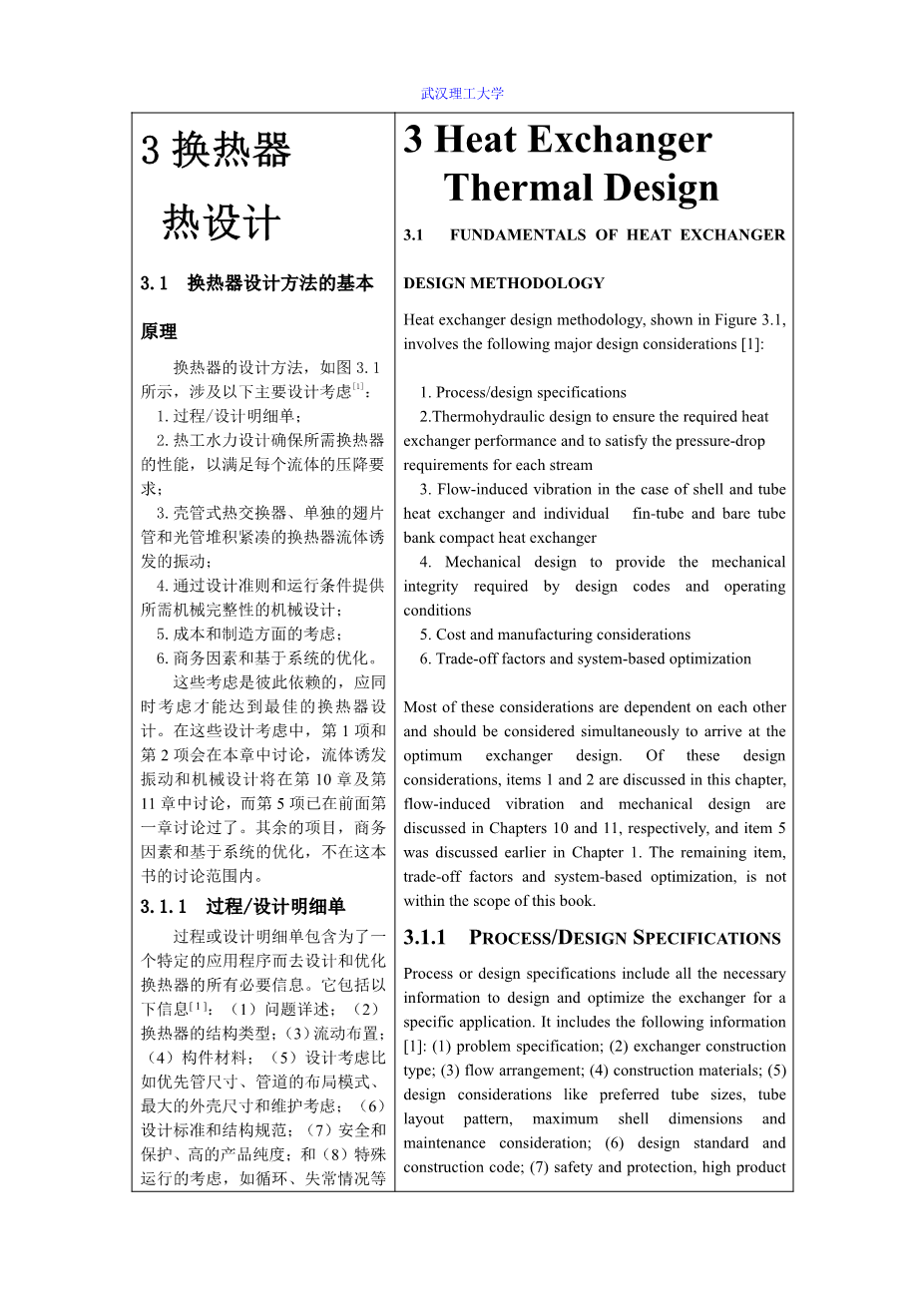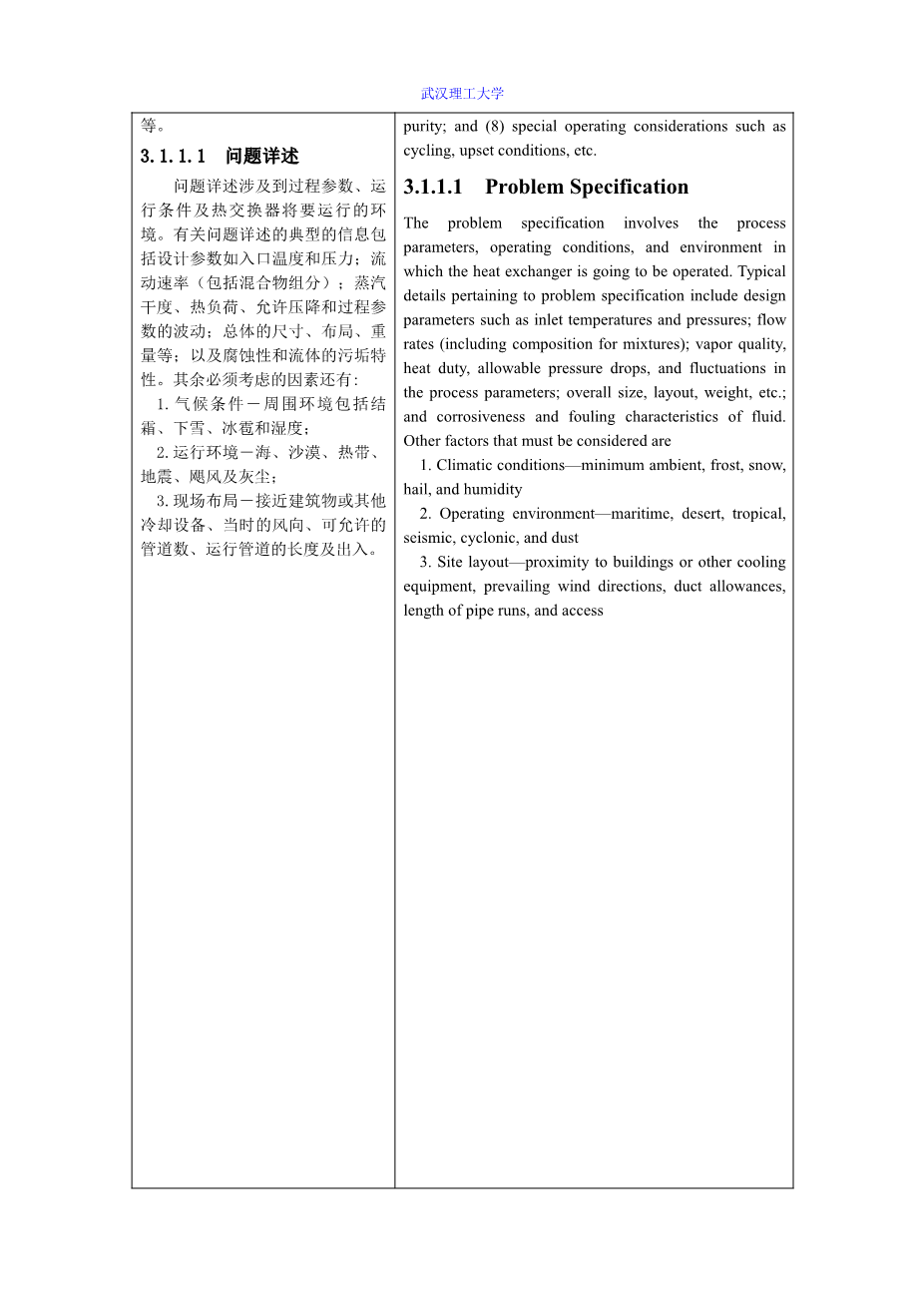3 Heat Exchanger Thermal Design
3.1 FUNDAMENTALS OF HEAT EXCHANGER DESIGN METHODOLOGY
Heat exchanger design methodology, shown in Figure 3.1, involves the following major design considerations [1]:
1. Process/design specifications
2.Thermohydraulic design to ensure the required heat exchanger performance and to satisfy the pressure-drop requirements for each stream
3. Flow-induced vibration in the case of shell and tube heat exchanger and individual fin-tube and bare tube bank compact heat exchanger
4. Mechanical design to provide the mechanical integrity required by design codes and operating conditions
5. Cost and manufacturing considerations
6. Trade-off factors and system-based optimization
Most of these considerations are dependent on each other and should be considered simultaneously to arrive at the optimum exchanger design. Of these design considerations, items 1 and 2 are discussed in this chapter, flow-induced vibration and mechanical design are discussed in Chapters 10 and 11, respectively, and item 5 was discussed earlier in Chapter 1. The remaining item, trade-off factors and system-based optimization, is not within the scope of this book.
3.1.1 Process/Design Specifications
Process or design specifications include all the necessary information to design and optimize the exchanger for a specific application. It includes the following information [1]: (1) problem specification; (2) exchanger construction type; (3) flow arrangement; (4) construction materials; (5) design considerations like preferred tube sizes, tube layout pattern, maximum shell dimensions and maintenance consideration; (6) design standard and construction code; (7) safety and protection, high product purity; and (8) special operating considerations such as cycling, upset conditions, etc.
3.1.1.1 Problem Specification
The problem specification involves the process parameters, operating conditions, and environment in which the heat exchanger is going to be operated. Typical details pertaining to problem specification include design parameters such as inlet temperatures and pressures; flow rates (including composition for mixtures); vapor quality, heat duty, allowable pressure drops, and fluctuations in the process parameters; overall size, layout, weight, etc.; and corrosiveness and fouling characteristics of fluid. Other factors that must be considered are
1. Climatic conditions-minimum ambient, frost, snow, hail, and humidity
2. Operating environment-maritime, desert, tropical, seismic, cyclonic, and dust
3. Site layout-proximity to buildings or other cooling equipment, prevailing wind directions, duct allowances, length of pipe runs, and access
Problem specification
Determine surface geometrical properties,
j and f
Modity the variables
Thermophysical fluid properties
Thermohydraulic design Heat transfer and pressure drop
Is the design acceptable?
No
Yes
Analyze for flow-induced vibration of shellside in the case of shell and tube exchanger
Mechanical design
Optimum solution
Trade-off factors
Manufacturing considerations and cost estimates
Figure3.1 Heart exchanger design methodology
3.1.1.2 Exchanger Construction
Based on the problem specifications and experience, the exchanger construction type and flow arrangement are first selected. Selection of the construction type depends upon the following parameters [1]:
1. Fluids (gas, liquids, or condensing/evaporating) used on each side of a two-fluid exchanger
2. Operating pressures and temperatures
3. Fouling
4. Whether leakage or contamination of one fluid to the other is allowed or not
5. Cost and available heat exchanger manufacturing technology
3.1.1.3 Surface Selection
Compact heat exchanger: Factors that influence the surface selection include the operating pressures, fouling, maintenance requirements, erosion, fabricability, cost, etc.
Shell and tube heat exchanger: For shell and tube exchangers, the criteria for selecting core geometry or configurations are the desired heat transfer performance within specified pressure drops, fouling, corrosion, maintenance, repair, cleanability by mechanical means, minimal operational problems (flow-induced vibrations), safety, and cost; additionally, the allocation of fluids on the shellside and the tubeside is an important consideration.
3.1.2 Thermohydraulic Design
Heat exchanger thermohydraulic design involves quantitative heat transfer and pressure-drop evaluation or exchanger sizing. Basic thermohydraulic design methods and inputs to these analyses are as follows.
3.1.2.1 Basic Thermohydraulic Design Methods
As discussed in Chapter 2, the ε-NTU, P-NTU, LMTD, or psi;-P method can be used for solving the thermal design problem.
3.1.2.2 Thermophysical Properties
For heat transfer and pressure-drop analysis, the following thermophysical properties of the fluids are needed: dynamic viscosity p, density, specific heat cp, surface tension, and thermal conductivity k. For the conduction wall, thermal conductivity is needed.
3.1.2.3 Surface Geometrical Properties
For heat transfer and pressure-drop analyses, at least the following surface geometrical properties are needed on each side of a two-fluid compact heat exchanger:
bull;Heat transfer area, A, which includes both primary and secondary surface area if any
bull;Core frontal area,
bull;Minimu
剩余内容已隐藏,支付完成后下载完整资料


英语原文共 24 页,剩余内容已隐藏,支付完成后下载完整资料
资料编号:[146155],资料为PDF文档或Word文档,PDF文档可免费转换为Word


